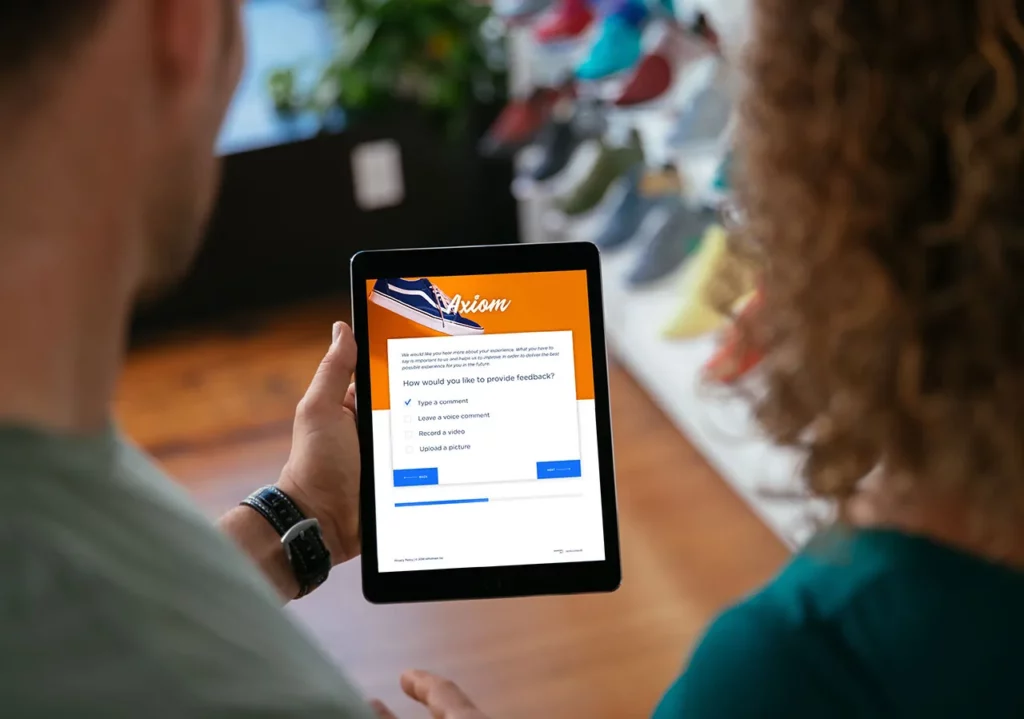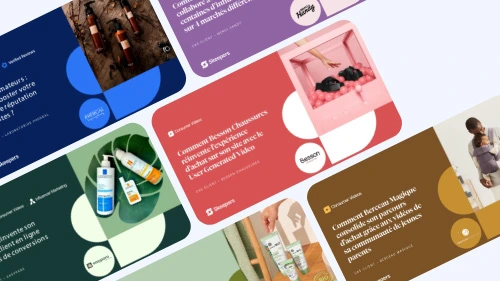Customer feedback is one of the most valuable assets a brand can collect. It offers real-time insight into how your products, services, and customer experiences are being perceived helping you make informed decisions that lead to better business outcomes. But here’s the catch: most brands struggle to get customers to actually respond to surveys. According...
Customer feedback is one of the most valuable assets a brand can collect. It offers real-time insight into how your products, services, and customer experiences are being perceived helping you make informed decisions that lead to better business outcomes.
But here’s the catch: most brands struggle to get customers to actually respond to surveys. According to SurveyAnyplace, the average survey response rate is just 10-30%, depending on the channel, timing, and audience. Email surveys, one of the most common formats, average around 20-25%, while website pop-up surveys fall even lower, often into the single digits. In other words, a large percentage of your customers are simply tuning out.
Why does this happen? Survey fatigue, lack of personalization, poor timing, or just the fact that customers don’t feel their feedback will make an impact.
This is where User-Generated Content (UGC) can play a surprising but powerful role. UGC like reviews, photos, or personal stories shared by customers not only helps brands build trust but also creates a culture of participation. When customers see that their voices are valued and publicly celebrated, they’re far more likely to engage.
In this article, we’ll break down the industry standard for survey response rate, why they’re typically so low, and how integrating UGC into your strategy can turn passive audiences into active contributors.
What’s the Average Survey Response Rate by Industry?
To understand where your brand stands, let’s take a look at the industry benchmarks:
| Industry | Average Response Rate |
| Retail / eCommerce | 5–15% |
| SaaS / Tech | 8–20% |
| Healthcare | 10–30% |
| Financial Services | 10–20% |
| Education | 20–30% |
| Hospitality / Travel | 10–25% |
(Sources: SurveyMonkey, SurveyAnyplace, HubSpot)
Despite efforts to personalize and incentivize surveys, response rates have remained largely stagnant. Factors like email overload, impersonal outreach, and time-consuming forms are often to blame.
But brands that break through this noise do one thing differently: they treat feedback like a conversation, not a one-way data grab. That’s where UGC enters the picture.
How UGC Can Help Improve Survey Engagement

UGC can be a game-changer when it comes to increasing survey response rates. Why? Because UGC creates a two-way conversation, one built on trust, authenticity, and community. When shoppers complete a customer satisfaction survey, you gain direct insight into how they truly feel about the experiences your brand provides, what’s working well and where there’s room for improvement. These valuable responses can be woven into your UGC strategy. Consider sharing quotes from the surveys on your website or social media to show you value customer voices. You can also use surveys to encourage customers to leave a review for a recent purchase, offering incentives like loyalty points or discount codes in return.
Here’s how leveraging UGC can help drive higher survey participation:
Social Proof Encourages Participation
When consumers see that others are sharing their opinions (via reviews, photos, or videos), it taps into a psychological principle called social proof. This makes them more likely to engage themselves, including responding to surveys.
In fact, 92% of consumers trust UGC more than branded content (Nielsen). When you showcase real customer voices such as reviews, testimonials, social posts, it sends a message: “We value feedback. Yours included.”
Makes Feedback Feel More Relational
When a brand incorporates UGC in emails or on the survey landing page (like quotes or videos from real customers), it increases relatability. Customers feel like they’re contributing to a community rather than just filling out a form, leading to higher response rates.
Fosters a Feedback Loop
When people feel heard, they’re more likely to participate again. This feedback loop not only increases survey response rates—it builds long-term loyalty.
Personalizes the Ask
Pairing your survey request with personalized UGC (like a shout-out in a story or email) can dramatically increase open and click-through rates. Instead of a generic “Please fill out our survey,” it becomes: “We loved your review, can we hear more from you?”
Makes Surveys More Interactive
Integrating UGC formats (like polls, reactions, or short-form video responses) into your feedback process keeps it lightweight and fun. Micro-feedback formats like Instagram story polls or TikTok stitch challenges can yield high engagement with minimal friction.
Clarins delivers an unforgettable shopping experience
Clarins, a highend skincare brand, aimed to improve customer knowledge and customer relations with feedback. Their aim was to correct the existing disparities between in-store and online journeys to ensure the same quality of customer experience.
Clarins measured customer satisfaction post-purchase whether online or in-store to help assess key moments in the customer journey, highlight pain points and implement improvements at both regional and global levels.
While the Net Promoter Score (NPS) remains the primary metric, additional touchpoints like delivery, customer service, and in-store experience are evaluated using the Customer Satisfaction Score (CSAT).
This type of satisfaction campaign also serves two added purposes. First, identifying repurchase intent to activate targeted marketing actions and second to enrich the customer database by collecting missing information.
With Skeepers Feedback Management solution, the brand achieved +13pts NPS score and an inspirational +242% increase in respondents to questionnaire surpassing the the industry standard for survey response rate.
How to Improve Survey Response Rates with UGC
Here are actionable ways to weave it into your survey strategy and get those response rates climbing.
Show UGC Before You Ask
Before sending a survey, showcase customer voices. Add top-rated reviews, user photos, or video testimonials to the email or landing page. This sets the tone that real people are contributing, and you value their input.
Tip: Add a short sentence like: “Here’s what our community is saying—what’s your take?”
Turn Surveys into Stories
Instead of just asking customers to fill out a form, invite them to “share their experience.” Positioning your survey as a way to contribute content like a review, a short story, or a product tip makes the process feel more social and less transactional.
Use Micro-UGC to Prompt Action
Incorporate bite-sized feedback formats like polls, emojis, or sliding scale questions. These low-barrier UGC moments often spark greater interaction and can be gateways to longer-form feedback.
Personalize Survey Invites with UGC
Use AI or segmentation to insert personalized UGC in your outreach like similar reviews from people with the same purchase history or location. The more relatable the content, the higher the chance they’ll click through.
Incentivize with Visibility
Instead of (or alongside) discounts, offer visibility as a reward. Tell respondents that their review, quote, or story might be spotlighted in future content. Many customers love the opportunity to be featured by a brand they support.
Conclusion
Collecting feedback is about building meaningful relationships with your audience. Every survey is an opportunity to spark connection, strengthen trust, and make your customers feel seen and heard.
While many brands struggle to meet the industry standard for survey response rate, those who incorporate UGC into their strategy often exceed it. By turning surveys into interactive, community-driven moments, UGC transforms passive requests into engaging brand experiences.
The brands that win today are the ones who don’t just ask for opinions, they listen, celebrate, and respond. Let your customers be part of your story, and they’ll stick around to help write the next chapter.












